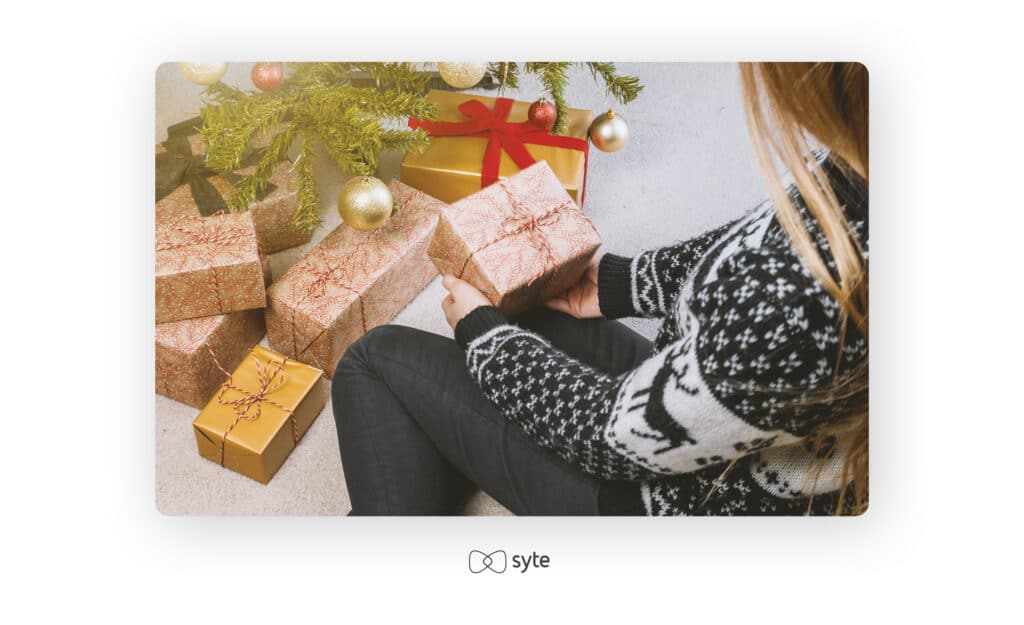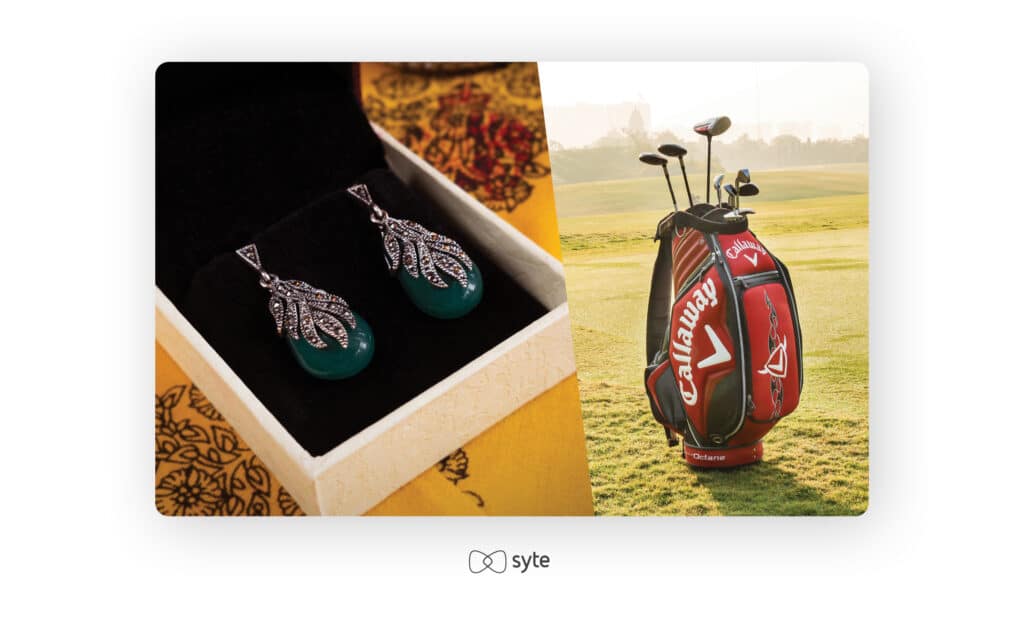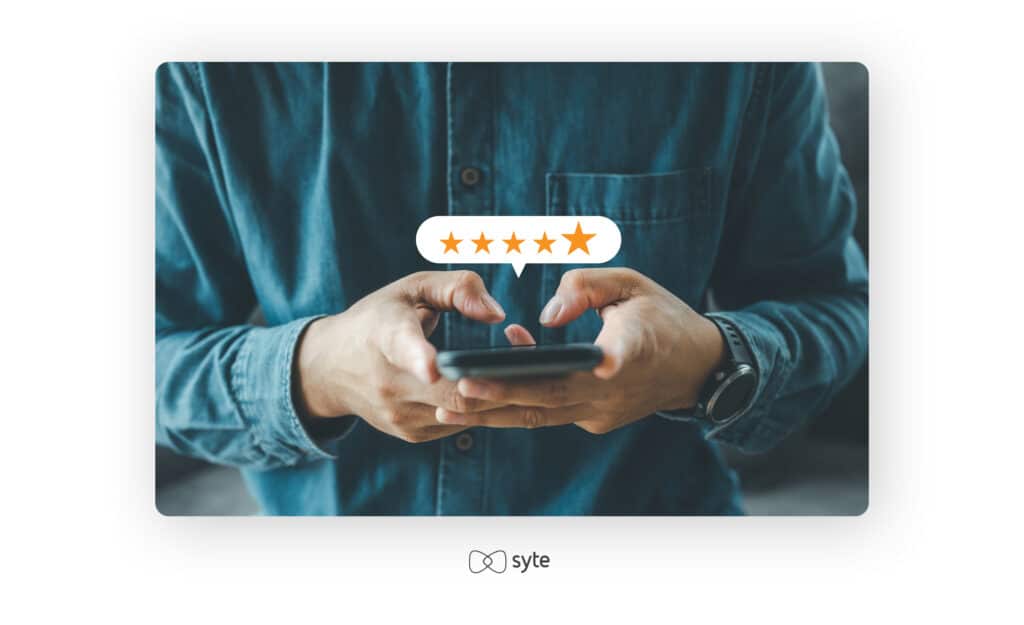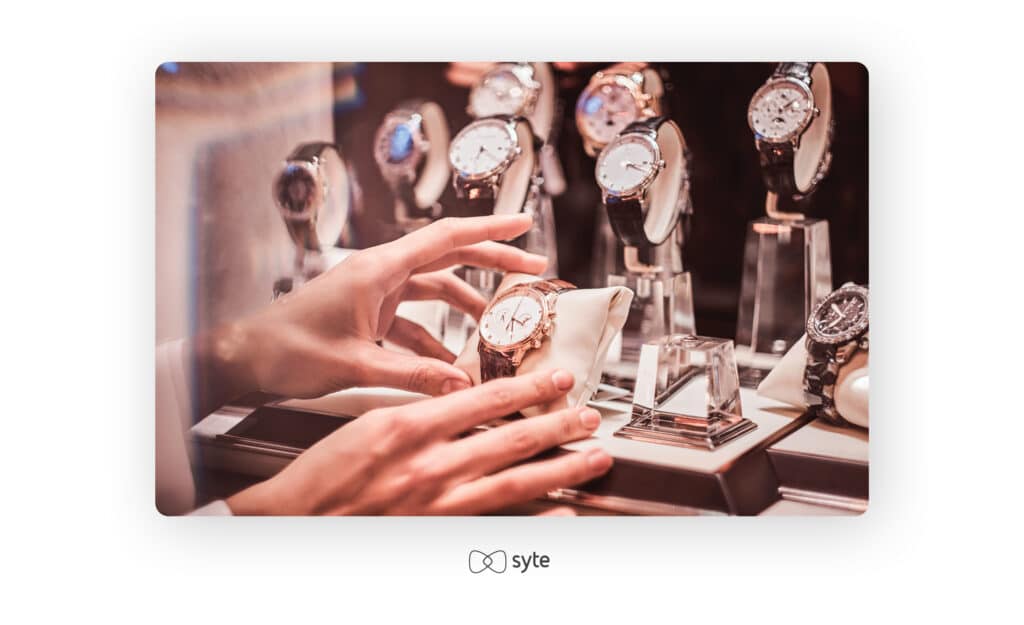With Black Friday and Cyber Monday (BFCM) only a few weeks away and Christmas just around the corner, online shoppers worldwide are already filling their baskets and wishlists with products they plan to buy this holiday season. As such, most brands and online retailers are actively sharing promotions and preparing for the influx of website traffic expected this time of year. But how can you turn holiday shoppers into repeat buyers for the rest of the year?
It takes more than one big sale to bring customers back time and time again. In this post, we’ll review a number of general and industry-specific strategies that eCommerce brands and retailers can use to engage new customers and encourage brand loyalty throughout the holiday season and into the new year.
Top eCommerce Guidelines for Building Brand Loyalty During the Holidays

At Syte, we live and breathe eCommerce. We know what matters to different types of customers when they shop online at various times throughout the year. But before we dive into some specific brand loyalty tips and tricks for the fashion, jewelry, and home decor markets, we’ll review three key steps related to UX, personalization, and merchandising that EVERY online retailer should take in advance of the holiday season. Whether you’re selling high end jewelry, fast fashion pieces, or sustainable furniture, you’ll delight your customers – and your brand will benefit – when you implement these important eCommerce guidelines:
UX: The First Step to Success
In the buildup to BFCM, Christmas, and New Year’s, consumers spend weeks (sometimes months) researching products they want to buy for their loved ones or themselves. If a shopper has trouble navigating your website during the search and discovery phase, there’s little chance that they’ll stick around long enough to make a purchase.

In the rush to secure a good deal during BFCM and other big sales, there’s even less chance of conversion if shoppers experience friction anywhere on the site, especially at checkout. A negative experience can quickly lead consumers to bounce to competitors’ websites – and undo any brand loyalty that may have been there in the first place. That’s why it’s so important to invest in top notch UX before the holiday season gets underway.
Here are five concrete ways to improve the user experience on your website:
- Offer multiple search options – Cater to different types of shoppers with different ways to search your site. For those who prefer traditional text search, increase engagement by providing well-organized product filters that allow shoppers to hone in on the products that actually reflect their unique needs and preferences. For goal-oriented customers who come to your site with a specific product in mind, provide the option to upload and search with an image they’ve captured on their phone.
- Eliminate dead ends – Regardless of which search option your customers use, it’s imperative that the results are highly relevant and never lead to dead ends. In our recent webinar with luxury home decor retailer McGee & Co, the VP of Technology Josh Batchelor explained, “One of the things we’re changing this year [for Black Friday] is that when an item is out of stock, we’re simplifying our out of stock PDP and putting recommendations higher so that [customers] are seeing them immediately.” Offering visually similar recommendations is one of the best ways to prevent customers from leaving your site filled with disappointment.
- Include complementary recommendations – Once your shoppers have started browsing product detail pages (PDPs), inspire them to expand their journey by displaying a recommendation carousel of complementary items that will complete the look of a room, outfit, or style. You can also add this type of recommendation carousel to shopping cart and checkout pages.
- Prepare gift guides – Create holiday-themed gift guides and photo galleries to encourage shoppers to check out new products and sale items. Carefully curated guides and galleries are not only helpful to shoppers browsing for inspiration, they can also significantly improve retailers’ search rankings when they are built with a strong focus on SEO optimization.
- Ensure seamless checkout – Improve your checkout experience by reducing the number of required fields and pages that customers have to complete before purchase. Making this process as quick and painless as possible will decrease the chances that shoppers will get annoyed and quit in the middle.
Bottom line: You want to make the entire shopping journey memorable and seamless so that customers will want to come back again and again – not just during sale season.
Personalization: Give Shoppers a VIP Experience
When consumers experience a truly personalized shopping experience online, it makes them feel seen and heard – which works wonders for increasing brand loyalty and customer retention. To achieve this today, retailers need to focus on personalization that goes beyond simple demographics or past purchase history. After all, a person’s gender, age, or location don’t really matter if they’re looking for a present for someone else. Past purchase history is also less relevant during the holiday season when friends and family members are looking at a wide variety of products for the purpose of gift-giving.
For example, a husband shopping for his wife’s Christmas gift doesn’t need to see recommendations for golf products related to the search he did yesterday for his father-in-law’s holiday gift. A better approach to personalization focuses on the context of each search session by looking at the metadata of the products that users are interacting with at that moment.

In the example from above, a man searching for “silver earrings with green gemstones” will only see relevant jewelry results when personalization is context-based. A website that relies on past purchase history to personalize search results might end up showing completely irrelevant options if he was looking at golf clubs yesterday and cookware the day before that.
“Because goods are fast-moving, personalized product discovery is key, especially in terms of recommending similar items for out-of-stock pieces,” said Michael Simpson, CRM and eCommerce Head at fashion retailer Tally Weijl. “When customers are able to find their favorite products or comparable ones, that is great for the overall customer experience and sales.”
Bottom line: Brands and retailers that focus on understanding an individual’s goal and the styles or preferences they’re looking for in the context of each search session will be able to provide a much better customer experience – one that will make holiday shoppers want to return for more friction-free shopping journeys in the future.
The busy holiday season means more sales than usual, but the downside is that it can also mean more returns. Depending on the product, returns can be a logistical nightmare (e.g. large furniture or bespoke jewelry) and even if a return is not difficult to coordinate, it’s never good for customer retention when your products fall short of expectations. To avoid this issue in advance of the holidays (and all year round), brands and retailers should work on a merchandising strategy that promotes the highest-converting items with the best reviews and lowest return rates in search results and product listing pages.

Leveraging customer ratings and reviews can make a significant difference to shoppers who are on the fence and want to see how other buyers feel about your products. Five star reviews give reassurance that your product images and descriptions are accurate – which can help to increase conversion rates and overall customer satisfaction.
Bottom line: When it comes to brand loyalty, nothing is more important than providing a customer with a good experience that they’ll want to repeat again and again. So make sure that your online merchandising strategy is set to surface only your best performing items at the top of your search results this holiday season.
Brand Loyalty Tips for Fashion, Jewelry, and Home Decor Websites
Here are some helpful tips we’ve learned about building brand loyalty while working with our clients in the fashion, jewelry, and home decor industries.
Fashion Loyalty: Use Visual AI to Combat Inventory Issues
This year, many fashion companies are dealing with supply issues. There are inventory shortages and backlogs around the world, which means it’s really important to have a plan in place to prevent consumer disappointment.
As mentioned previously, dead ends are a sure way to make potential customers drop off your site. When an item is unavailable, your search engine should surface visually similar alternatives that are in stock. This will enable site visitors to continue their shopping journey with your brand now and provide incentive for them to return again in the future because they’ll remember the positive experience.

Tip: Global supply chain issues actually give you the opportunity to take away other brands’ loyal customers if your brand offers a better user experience. For example, offering super relevant results with visually similar alternatives when an item is out of stock can give your brand a competitive advantage. By investing in visual AI solutions to upgrade your brand’s customer experience, you’re likely to bring in new customers who had poor experiences with other brands and retailers.
Jewelry Loyalty: Focus on Omnichannel Excellence
Building loyalty among jewelry shoppers can be even more of a challenge. Jewelry sales are often for higher ticket items that are purchased less frequently, so brands and retailers must focus on creating a memorable shopping experience that will draw people in and encourage them to return in the future.
Around the holiday season, there is usually a large uptick in brick and mortar jewelry store sales. However, many of these buyers do their research online in advance of trekking out to the physical store location to complete a purchase. That makes it extremely important for jewelry brands and retailers to give their customers a stellar search and discovery experience that’s ready well ahead of BFCM, Christmas, and New Year’s Eve.

As we mentioned in our BFCM piece about excess inventory, according to the National Retail Federation, 61% of shoppers have begun to browse as early as the first week of November, and 28% have completed their shopping by then. To learn more about how to implement an immersive and flawless omnichannel retail experience, check out our guide here.
Home Decor Loyalty: Communicate Early and With Transparency
The home decor industry is a bit different from fashion and jewelry. Here, it’s common for people to buy furniture and wait months for delivery. So, when you’re preparing for BFCM and the holiday season in general, it’s important to consider the state of your inventory.
At McGee & Co, VP of Technology Josh Batchelor said, “We are really focused on what’s in stock – and by in stock, that even means what’s easy and quick to ship.” This information is important because holiday shoppers are often more impulsive with their purchases and less willing to wait a long time for delivery. To appeal to the impulse buyer, home decor brands and retailers should set merchandising rules that promote items that are ready to go at a higher frequency.

You can also take advantage of the buildup to the holiday season to communicate early and often with existing customers. That’s part of the business plan at Sofology, where holiday prep starts months in advance: “For our customers to feel at home on a sofa they love during the festive season, they need to know which sofas are available for delivery in time for Christmas,” reiterated James Robinson, Head of Conversion Rate Optimisation at Sofology. “As many of our products are made to order, this means communicating to customers as early as September which sofas are available for delivery before Christmas.”
Play the Long Game to Increase the Lifetime Value of Every Customer
In the end, building loyalty is all about providing positive experiences at every stage of the shopping journey. If your brand can do this – and do it repeatedly – you’re guaranteed to leave shoppers with a preference for your products. And it doesn’t just end there: happy customers can become brand ambassadors, sharing their satisfaction with friends and family who will hopefully also become loyal fans of your business.